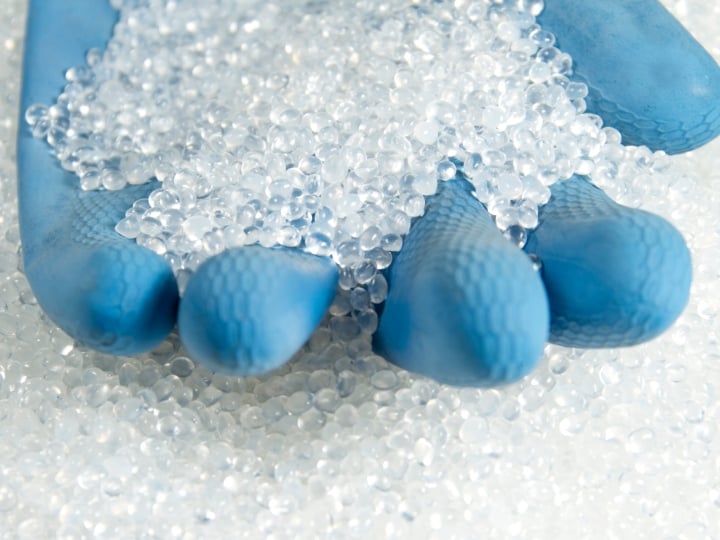Dynamic Mechanical Analysis (DMA) determines elastic modulus (or storage modulus, G'), viscous modulus (or loss modulus, G'') and damping coefficient (Tan D) as a function of temperature, frequency or time.
Scope:
Examples of standards: ASTM D4065, D4440, D5279
Results are typically provided as a graphical plot of G', G'', and Tan D versus temperature. DMA identifies transition regions in plastics, such as the glass transition, and may be used for quality control or product development. DMA can recognize small transition regions that are beyond the resolution of DSC (Differential Scanning Calorimetry).
Test Procedure:
The test specimen is clamped between the movable and stationary fixtures, and then enclosed in the thermal chamber. Frequency, amplitude, and a temperature range appropriate for the material are input. The Analyzer applies torsional oscillation to the test sample while slowly moving through the specified temperature range.
Specimen size:
Test specimens are typically 56 x 13 x 3 mm, cut from the center section of an ASTM Type I tensile bar, or an ISO multipurpose test specimen.
Data:
Elastic Modulus (G') versus temperature, frequency, or strain
Viscous Modulus (G'') versus temperature, frequency, or strain
Damping Coefficient (Tan D) versus temperature, frequency, or strain
Key Properties from G’ G”:
Tan Delta:
From the elastic and storage modulus, we can calculate Tan Delta – ratio of G” to G’ – relative degree of damping of the material. This is an indicator of how efficiently a material loses energy to molecular rearrangements and internal friction. (Tan Delta peaks below the Tg of a material on a DMA curve are often used to determine how well a material will stand up to impact.)
Complex Modulus:
In Torsional Mode: G* (Complex Shear Modulus)
The complex modulus is the complex response of the material to an applied strain (or stress) and is, in simplistic terms, the vector sum of the storage (Elastic) G’ and loss (viscous) G’’ components.
Various techniques for determination of Tg by DMA:
- Peak on Tan Delta curve
- Peak on Loss Modulus curve
- Half height of Storage Modulus curve
- Onset of Storage Modulus curve
It is important when reporting Tg by DMA to specify how the Tg was determined because the difference between the different techniques can vary as much as 25°C. Tg by DMA is often about 10°C higher than DSC Tg.
**Please note that this test description is intentionally generic in nature and aimed at providing a descriptive summary to enhance test understanding. Standards can be obtained from appropriate standards authorities.**

